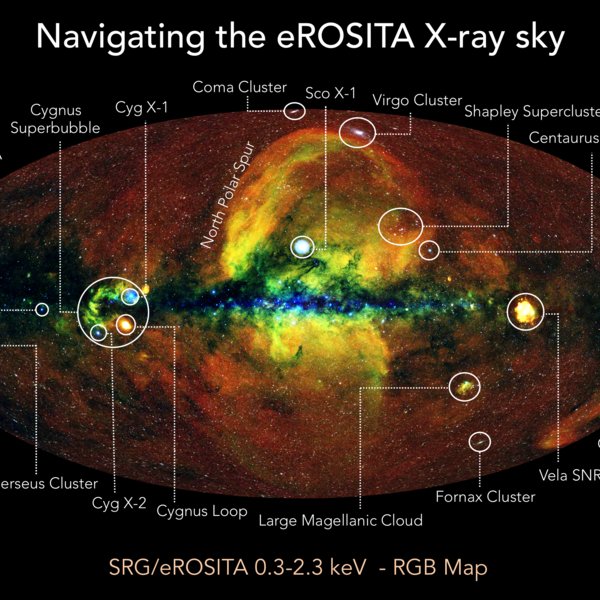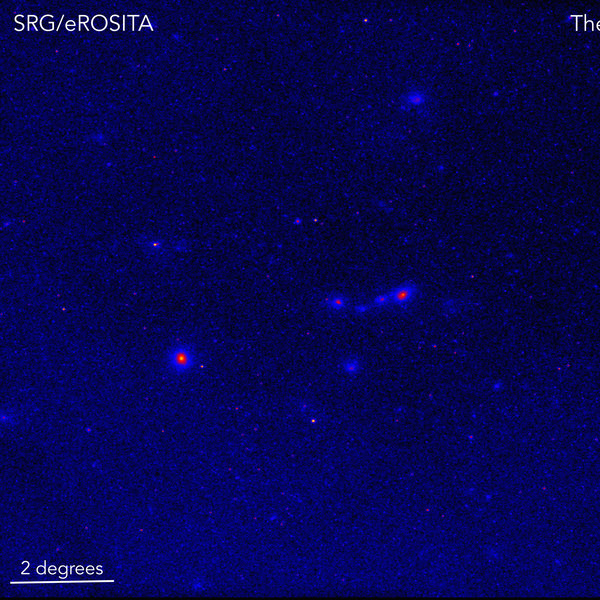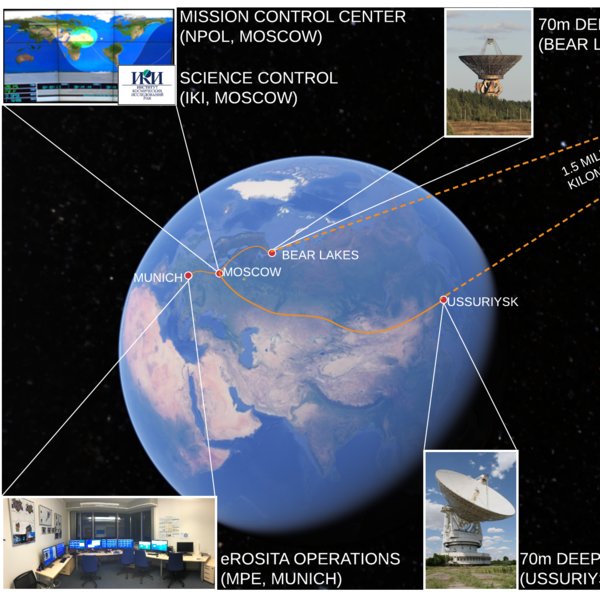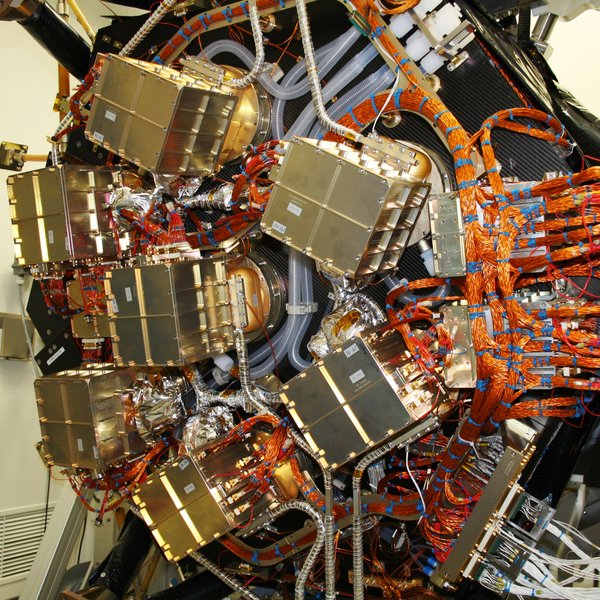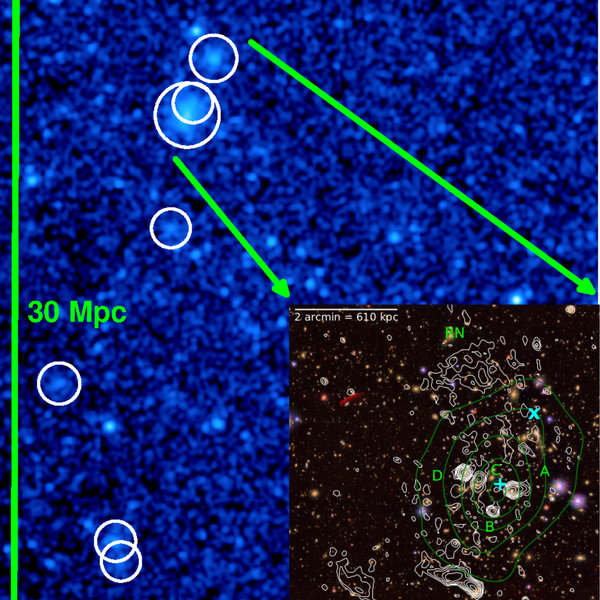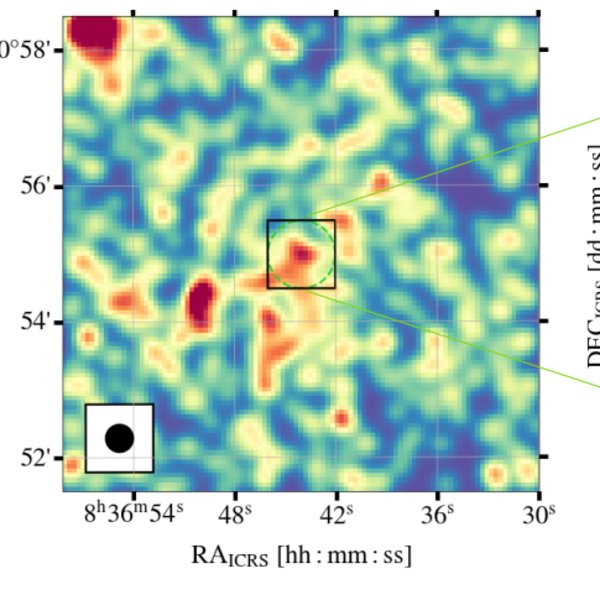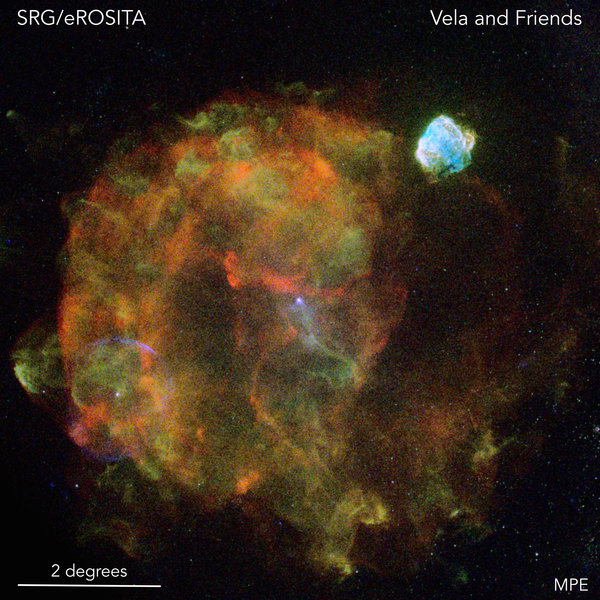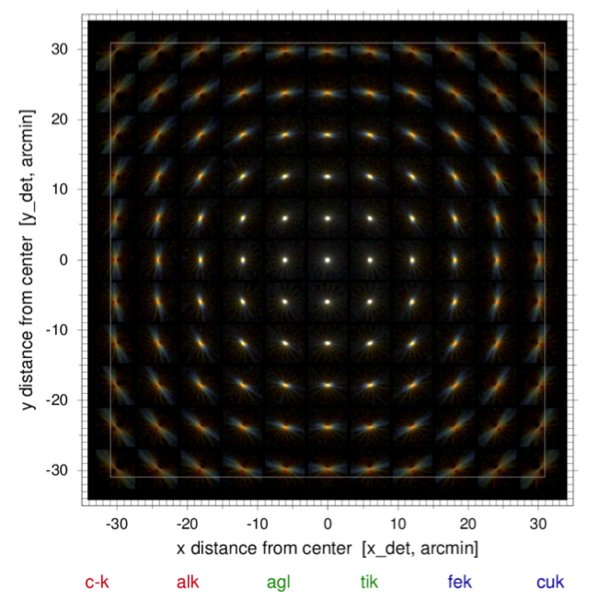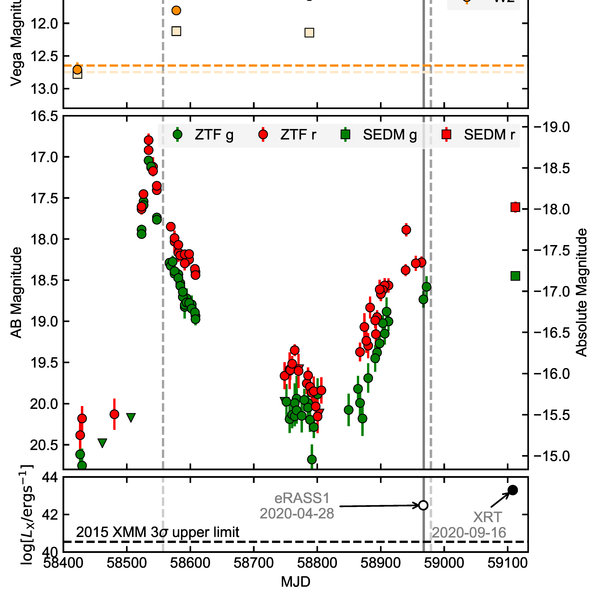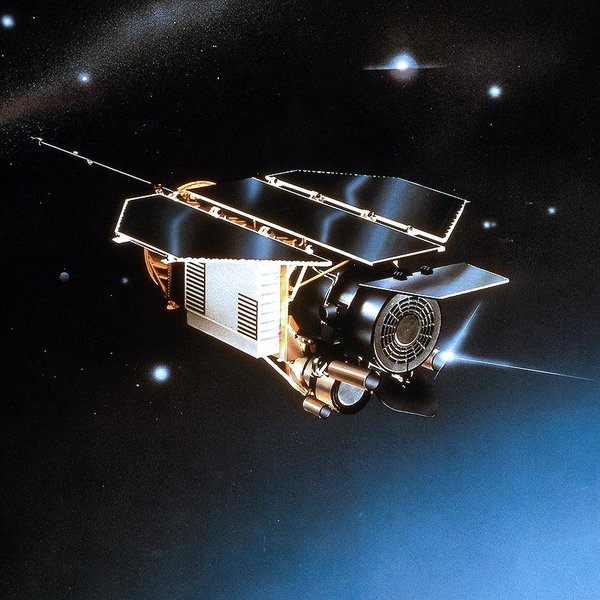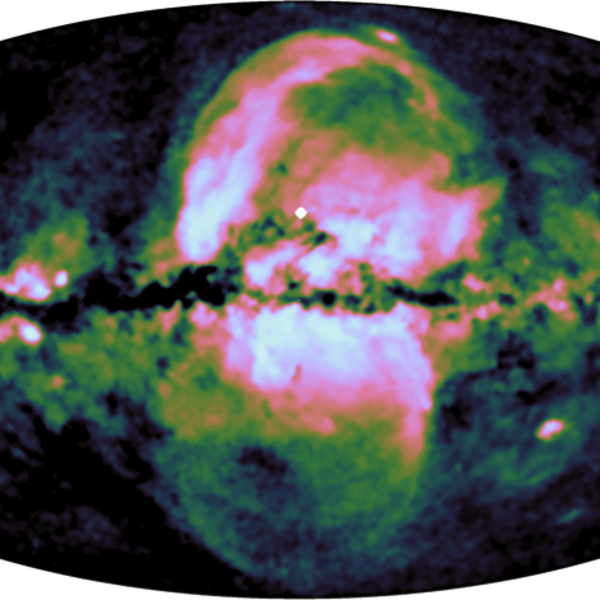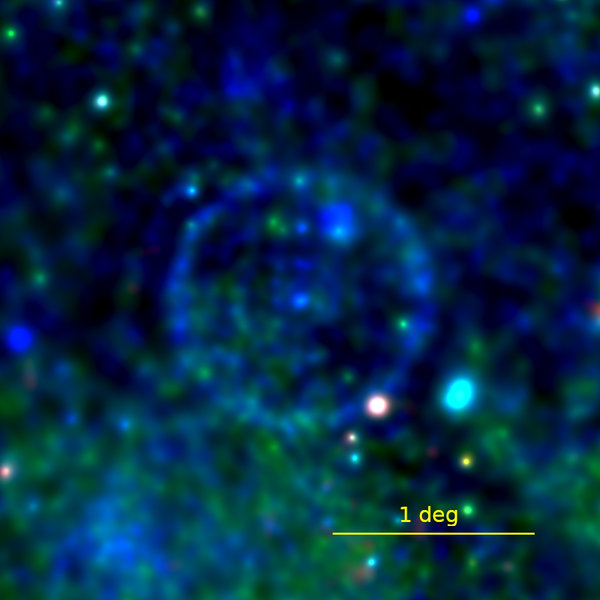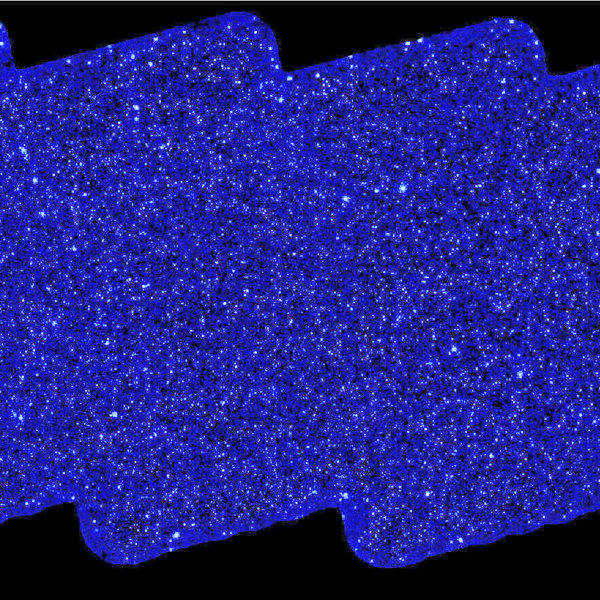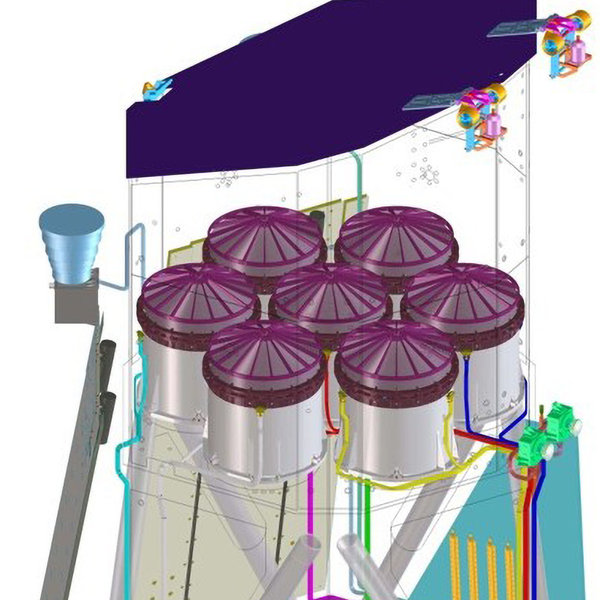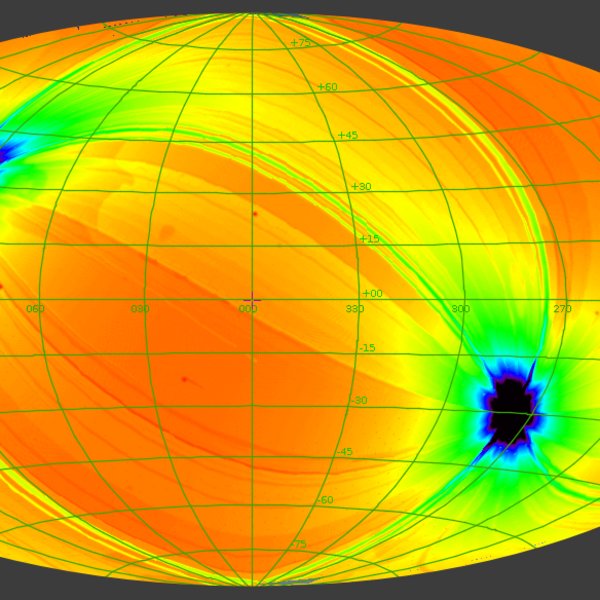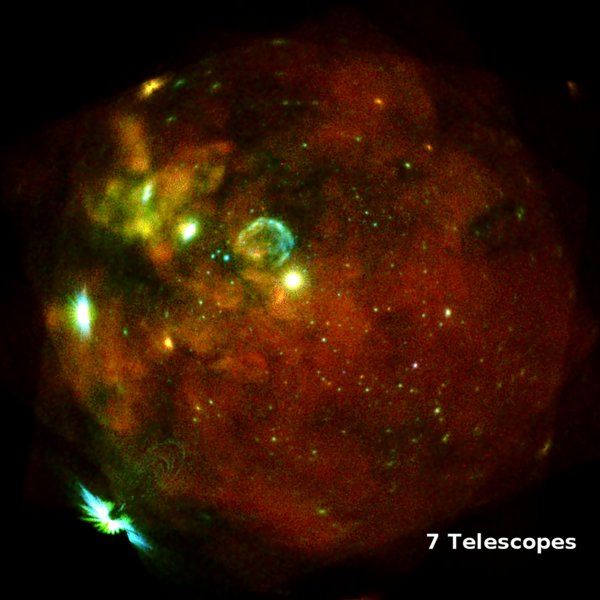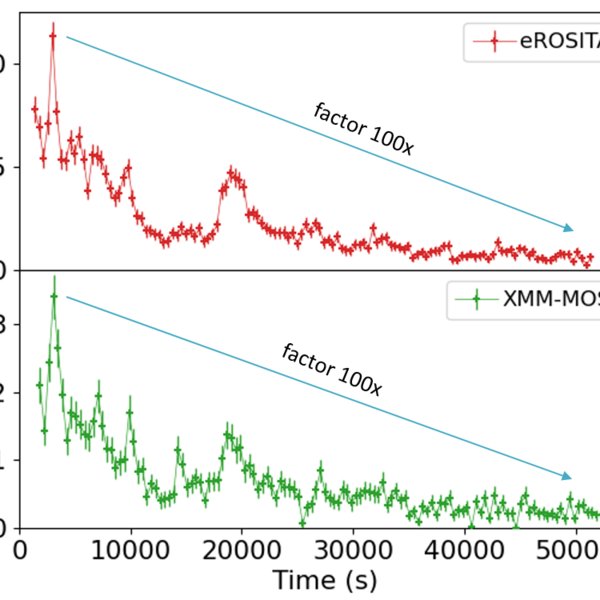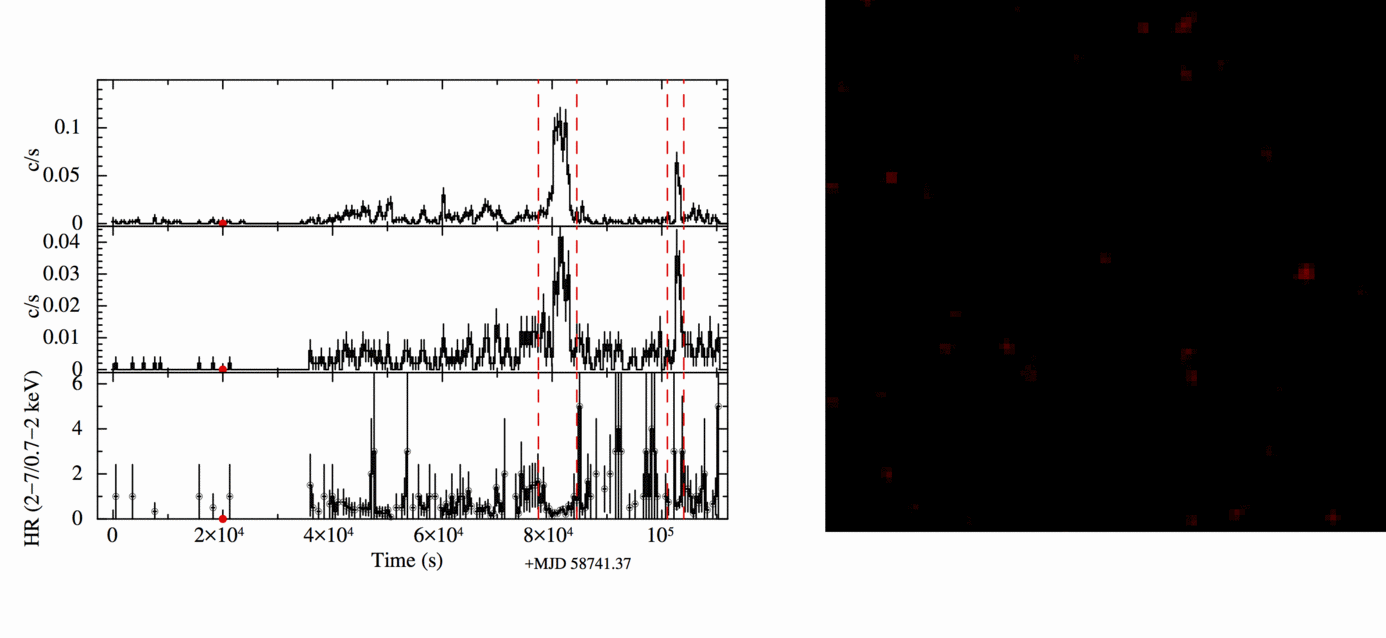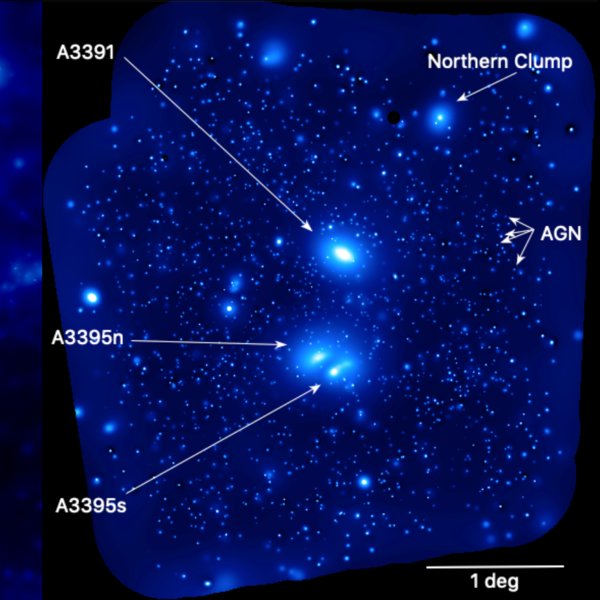eROSITA Advent Calendar
When eROSITA's eyes are closed, scintillating events can still be seen. They are caused by high-energy particles, such as Galactic cosmic rays or energetic solar particles. These can penetrate the shielding made of 3 centimetres of copper, and hit the sensitive area of the pnCCD camera. In addition, these particles can also interact with the camera housing and create a variety of secondary particles, forming showers of events that are accompanied by X-ray emission.
Usually, these events are rejected on-board, to save telemetry for the actual eROSITA science. On special occasions and for a short amount of time, full images with all events are beamed to ground, to see the full glory of space environment at the Lagrange point L2. The animation shows 140 such images, with total exposure of only 7 seconds, taken on the evening of 1st April 2020.
The Sun's 11-year activity cycle modulates the Galactic Cosmic Rays, and at the current solar minium the protecting magnetic fields are weakest. eROSITA could recently see a decline of this particle background, expected for the start of the new solar cycle. But also variations on the order of 27 days are visible, maybe coupled to solar rotation.M. Freyberg et al., "SRG/eROSITA in-flight background at L2", Proc. SPIE 11444, https://doi.org/10.1117/12.2562709
SRG mission control is carried out from Moscow. Spacecraft control, flight dynamics and ground antenna interfacing take place at the Mission Control Center (MCC) of the Lavochkin Research and Production Association. There is no continuous communication with the spacecraft: ground contact passes are planned daily with an average of 4 hours per day. The main ground stations involved in operations are large (~70 meters) dishes located in Bear Lakes, near Moscow, and in Ussuriysk, in the Russian far east.
During these 4 hours, MPE is in direct contact with eROSITA and control and operations takes place in the eROSITA control room at the institute. The operators-on-duty receive real time data, which is analysed and checked to verify the integrity of all the various eROSITA subsystems. Commands are executed in real-time. Real-time photons are received and displayed for a quick-view analysis before they are stored for scientific analysis. Before such a photon is displayed in one of the control room monitors, it travels 1.5 million kilometres from the location of the spacecraft to Earth and then crosses the whole of the Eurasian continent, from Ussuriysk to Munich. That is, of course, insignificant compared to the actual distance the photon has travelled before being recorded with the eROSITA instruments...
The eROSITA X-ray telescope is equipped with an array of seven cameras – one for each of the seven mirror systems. Based on the EPIC-pnCCD detector, the custom-made pnCCD detectors for eROSITA were developed at MPE, taking into account lessons learned during the XMM-Newton project.
The eROSITA detectors enable spectroscopic, time and spatially resolved observations with high quantum efficiency in the 0.2–10 keV energy range. The performance has been significantly improved compared to the XMM-Newton pnCCD detector. This allows eROSITA to perform spectroscopy also at low energies, e.g. it can resolve the K-line of carbon at 277 eV.
Since 15th of October 2019 all seven cameras observe the X-ray sky with a performance similar to that of the ground calibration measurements. The image shows the eROSITA focal plane camera array with one camera in the center and six cameras surrounding it.A detailed description of the eROSITA cameras can be found in this publication:
- The eROSITA Camera Array on the SRG Satellite, Norbert Meidinger et al., SPIE Proc. 11444, to be published
In this supercluster, three galaxy clusters are in the process of merging, which are shown in the enlarged region as an optical image. The large shocks induced by the merger in the intracluster medium shine in the radio waveband, denoted by the white contours. These observations allow us to study the physical processes that take place during structure formation at a node of the cosmic web, where a huge amount of matter is gravitationally pulled in.
15 years ago, eROSITA was "ROSAT's little daughter" - today, this little daughter has fully grown up.
ROSAT was built in the 1980s under the scientific direction of MPE and launched into space in 1990 on a Delta-II rocket. It was a mission with international participation: The UK provided an EUV telescope and the wide field camera; one of the three detectors for the main X-ray telescope, the High Resolution Imager (HRI), came from NASA, who was also responsible for launch. With a resolution of better than 5 arcseconds, ROSAT was unprecedented at the time, as was its field of view of 2 degrees in diameter. In only half a year, the X-ray telescope performed a survey of the complete sky, but in these six months 100,000 X-ray sources were discovered and X-ray astronomy grew by a factor of about 20. And although the mission time has been planned for just 1.5 years, ROSAT was operated until 1998, making the mission a huge success. In fact, ROSAT could be called the father of X-ray imaging surveys.
In February 2020, eROSITA discovered this glowing ring when scanning over the southern Milky Way. The ring is caused by scattered X-ray radiation from the faint blue object in the centre of the ring. This object, likely a black hole circled by a companion star, underwent a massive outburst one year before the eROSITA observation. On its thousands years travel a tiny fraction of the burst radiation was scattered by a dust cloud in a spiral arm of the Milky Way. Due to this detour through our galaxy the scattered X-rays arrive later than the direct radiation from the burst and form a faint ring growing with time.
With a diameter of 1.3 degrees this is by far the largest X-ray scattering ring discovered to date. By combining the eROSITA image of the ring with data from the ESA satellites XMM-Newton and Gaia an accurate distance of 3390 pc (11000 light-years) to the black hole binary was measured.
Reference: G. Lamer G., A. Schwope, P. Predehl, I. Traulsen, J. Wilms, M. Freyberg, 2020, A&A, accepted, http://arxiv.org/abs/2012.11754
The image is a schematic view of the eROSITA telescope with (from top): Front cover, 7 Mirror Assemblies (baffle, mirror, electron deflector) and 7 Camera Assemblies (filter wheel, camera, electronics box). In addition there are two startrackers (one seen) and four large radiators to cool the cameras and their electronics. The telescope structure is lightly shaded.
Reference: Predehl et al. 2020 (A&A, in press); arXiv:2010.03477
Reference: Th. Boller et. al, A&A accepted, https://doi.org/10.1051/0004-6361/202039316
During the Calibration and Performance-verification phase, eROSITA observed an an apparently typical high-mass X-ray binary in the Large Magellanic Cloud (XMMU J053108.3−690923) and caught some fast flares. This may be the first conclusive evidence of a supergiant fast X-ray transient (SFXT) outside our Galaxy. Composed of a supergiant luminous star and a compact object such as a neutron star, SFXTs derive their name from their strong and extremely fast-rising X-ray flares that usually last for a few-hours.
In most of the known SFXTs, flares are sporadic. The long exposure and unprecedented sensitivity offered by eROSITA have provided a unique opportunity to uncover the extreme variable nature of the source for the first time. The picture shows that the X-ray intensity exhibited multiple fast flares lasting for a few hours each. The total range of variability by comparison with earlier results spanned more than three-orders of magnitude and qualifies XMMU J053108.3−690923 as a textbook example of an SFXT.
During the course of its eight all-sky surveys, the eROSITA observations will allow a near continuous monitoring of high-mass X-ray binaries in the Magellanic Clouds. This will uncover many more such SFXTs whose true nature is waiting to be revealed.The paper describing this result can be found here: https://doi.org/10.1051/0004-6361/202039468
